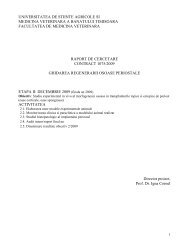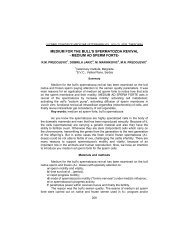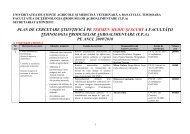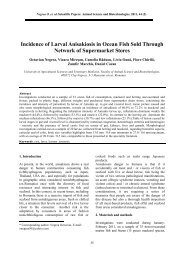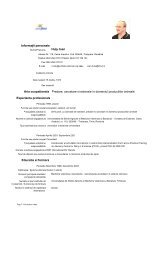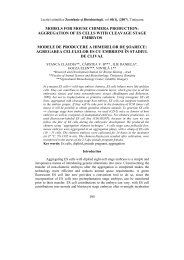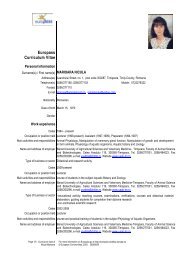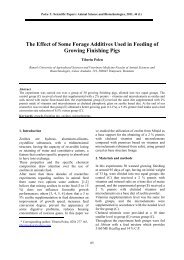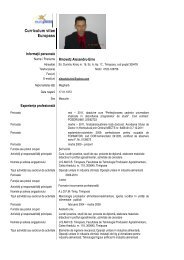journal of linguistic studies
journal of linguistic studies
journal of linguistic studies
Create successful ePaper yourself
Turn your PDF publications into a flip-book with our unique Google optimized e-Paper software.
consuming. As stated above, the teacher should adapt the films to the learners’ level <strong>of</strong><br />
pr<strong>of</strong>iciency and conceptual competence.<br />
4. CONCLUSION<br />
To sum up, the use <strong>of</strong> films is becoming more common. Good films can serve as a<br />
valuable pedagogical aid, both for classroom use and self-study. The ultimate goal is to<br />
arouse motivation in the students and to stimulate their imagination and creativity.<br />
Likewise, films are a rich source <strong>of</strong> idiomatic expressions, which, thanks to the context,<br />
are easy to grasp and internalise. The possibilities for using film in the foreign language<br />
class are endless.<br />
Furthermore, they add fun and involvement the to language classroom.<br />
REFERENCES<br />
Allan, Margaret. (1985). Teaching English with video. New York: Longman.<br />
Lonergan, J. (1984). Video in language teaching. Cambridge University Press.<br />
Schrank, J. (1986). Understanding mass media. Lincolnwood, IL: National Textbook<br />
Company.<br />
Vrhovac, Yvonne. (1990). Komunikacijska funkcija videa u nastavi stranih jezika.<br />
[Communication function <strong>of</strong> video in foreign language teaching. Strani jezici 1-2: 25-<br />
38.<br />
Wright, A. (1976). Visual Materials for the Language Teacher. New York: Longman.<br />
Sikorzynska, A., Hower, D. & Harris, M. (2006). New Opportunities Intermediate<br />
Student´s Book. New York: Longman.<br />
JASNA VUJČIĆ<br />
J. E. Tomića 26.<br />
35000 Sl.Brod, Croatia<br />
68



